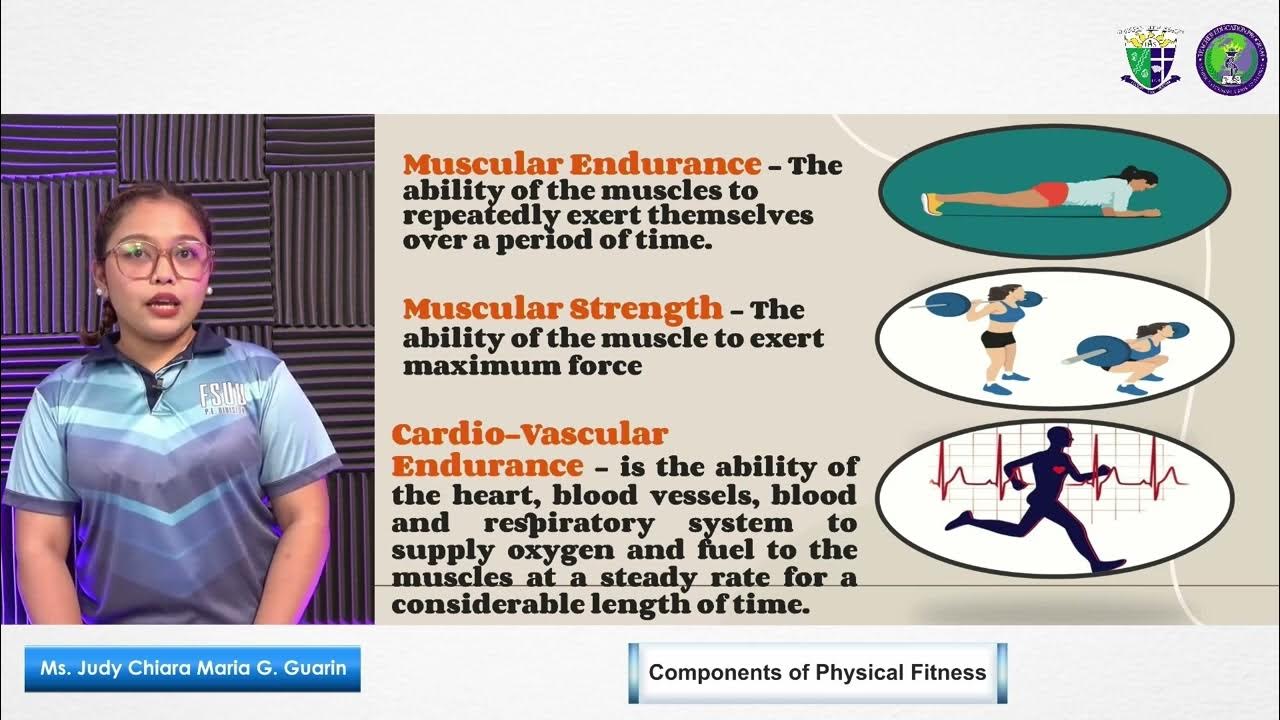PHYSICAL FITNESS | Health-Related Fitness and Skill-Related Fitness- Week 2-PFT Grade 7-10
Summary
TLDRThis lesson covers the fundamentals of physical fitness, highlighting both health-related fitness (HRF) and skill-related fitness (SRF). It introduces key components of fitness, such as cardiovascular endurance, muscular strength, flexibility, and agility, and details their corresponding physical fitness tests. Learners are encouraged to assess their readiness for physical activity through the Physical Activity Readiness Questionnaire (PAR-Q) and perform various fitness tests to measure their abilities. The lesson emphasizes the importance of fitness in overall well-being and provides practical steps for learners to evaluate and improve their physical health and skills.
Takeaways
- 😀 Physical fitness is the ability to respond to life's demands with extra energy for leisure and recreational activities.
- 😀 Health-related fitness includes cardiovascular fitness, muscular strength, endurance, flexibility, and body composition.
- 😀 Cardiovascular fitness is essential for heart and lung health, and activities like running, biking, and swimming test this ability.
- 😀 Muscular strength refers to the maximum force a muscle can exert, measured through activities like planking and the bench press.
- 😀 Muscular endurance is the ability to perform repeated work without fatigue, tested by exercises like sit-ups and push-ups.
- 😀 Flexibility refers to the range of motion of a joint, assessed through exercises like the zipper test and sit-and-reach test.
- 😀 Body composition is the ratio of fat to lean body mass, which can be determined through the body mass index (BMI).
- 😀 Skill-related fitness focuses on athletic performance and includes components like agility, balance, power, speed, coordination, and reaction time.
- 😀 Agility is the ability to quickly change direction, tested by activities like the hexagon agility test.
- 😀 A physical fitness test provides a standardized way to measure an individual's fitness level, identifying strengths and weaknesses for improvement.
Q & A
What is the purpose of subscribing and hitting the bell button at the beginning of the video?
-Subscribing and hitting the bell button ensures that viewers will be notified of new video lessons, keeping them updated on future content.
What is the significance of completing the Physical Activity Readiness Questionnaire (PAR-Q)?
-The PAR-Q helps assess if an individual is physically ready for physical activity and whether it’s safe for them to undergo fitness tests. It helps identify any health risks.
What are the health-related components of fitness covered in the lesson?
-The health-related fitness components discussed include cardiovascular fitness, muscular strength and endurance, flexibility, and body composition.
How is cardiovascular fitness measured in the physical fitness test?
-Cardiovascular fitness is measured using the three-minute step test, which evaluates cardiovascular endurance.
What does muscular strength refer to, and how is it tested?
-Muscular strength refers to the maximum amount of force a muscle can exert against an opposing force. It is tested using basic planking and the bench press, with planking used to measure core strength and stability.
How do you measure flexibility in the physical fitness test?
-Flexibility is measured using the zipper test (reaching right over left and left over right) and the sit-and-reach test, which assess the flexibility of the upper and lower extremities.
What is the purpose of the body composition measurement in the fitness test?
-The body composition test helps determine the ratio of body fat to lean body mass, providing insights into an individual's overall physical health. It is typically measured using body mass index (BMI).
What are the components of skill-related fitness?
-The components of skill-related fitness include agility, balance, power, speed, coordination, and reaction time.
How is agility measured in the physical fitness test?
-Agility is measured using the hexagon agility test, where participants move in different directions quickly, and the time it takes is recorded. The average time is then calculated.
Why is it important to measure reaction time during the physical fitness test?
-Reaction time is important because it measures how quickly an individual can respond to a stimulus, which is crucial in sports like running sprints, swimming, and fencing.
Outlines

This section is available to paid users only. Please upgrade to access this part.
Upgrade NowMindmap

This section is available to paid users only. Please upgrade to access this part.
Upgrade NowKeywords

This section is available to paid users only. Please upgrade to access this part.
Upgrade NowHighlights

This section is available to paid users only. Please upgrade to access this part.
Upgrade NowTranscripts

This section is available to paid users only. Please upgrade to access this part.
Upgrade Now5.0 / 5 (0 votes)





